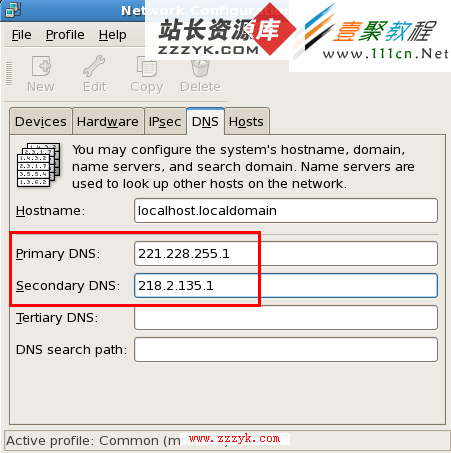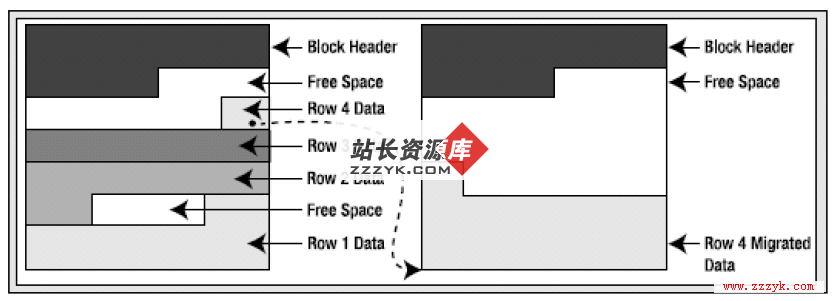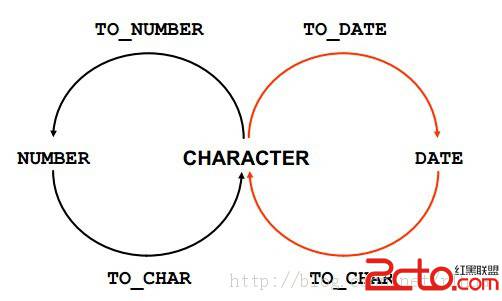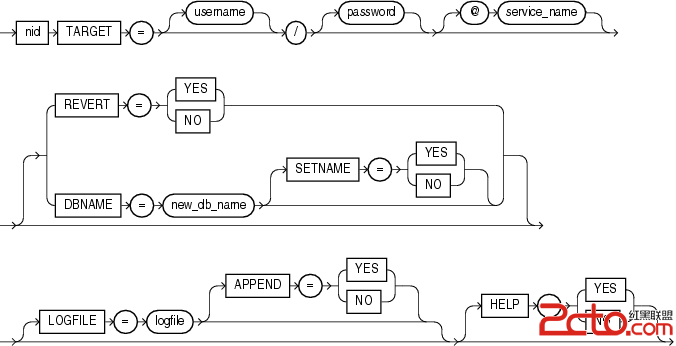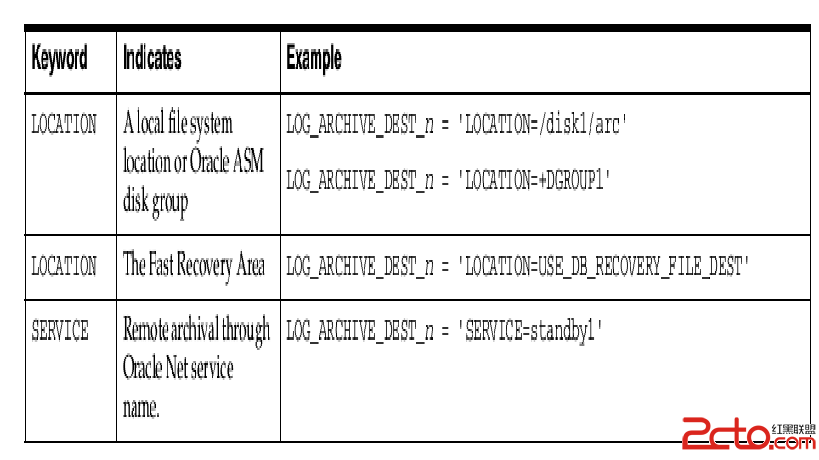oracle数组类型简单实例介绍
Oracle数组一般可以分为固定数组和可变数组
固定数组
| 代码如下 | 复制代码 |
| declare type v_ar is varray(10) of varchar2(30); my_ar v_ar:=v_ar('g','m','d','龚','帅'); begin for i in 1..my_ar.count loop dbms_output.put_line(my_ar(i)); end loop; end; declare type v_ar is varray(10) of varchar2(30); my_ar v_ar:=v_ar('g','m','d','龚','帅'); begin for i in 1..my_ar.count loop dbms_output.put_line(my_ar(i)); end loop; end; --可变数组 --一维数组 declare type v_table is table of varchar2(30) index by binary_integer; --类型可以是前面的类型定义,index by binary_integer子句代表以符号整数为索引, --这样访问表类型变量中的数据方法就是“表变量名(索引符号整数)”。 my_table v_table; begin for i in 1..20 loop my_table(i):=i; dbms_output.put_line(my_table(i)); end loop; end; declare type v_table is table of varchar2(30) index by binary_integer; --类型可以是前面的类型定义,index by binary_integer子句代表以符号整数为索引, --这样访问表类型变量中的数据方法就是“表变量名(索引符号整数)”。 my_table v_table; begin for i in 1..20 loop my_table(i):=i; dbms_output.put_line(my_table(i)); end loop; end; --易做图数组--多条记录 declare type v_table is table of t_user%rowtype index by binary_integer; my_table v_table; begin select * bulk collect into my_table from t_user; for i in 1..my_table.count/10 --my_table.count/10取到的值为四舍五入值 loop dbms_output.put_line('suser--'||my_table(i).suser); dbms_output.put_line('name---'||my_table(i).name); dbms_output.put_line('易做图----'||my_table(i).易做图); end loop; end; declare type v_table is table of t_user%rowtype index by binary_integer; my_table v_table; begin select * bulk collect into my_table from t_user; for i in 1..my_table.count/10 --my_table.count/10取到的值为四舍五入值 loop dbms_output.put_line('suser--'||my_table(i).suser); dbms_output.put_line('name---'||my_table(i).name); dbms_output.put_line('易做图----'||my_table(i).易做图); end loop; end; 易做图数组--单条记录 declare type v_table is table of t_user%rowtype index by binary_integer; my_table v_table; begin select * into my_table(9) from t_user where suser='admin'; --my_table(i) i可以为任意整数,但取值时必须保持以i一致; dbms_output.put_line('--suser--'||my_table(9).suser||'--name--'||my_table(9).name); end; declare type v_table is table of t_user%rowtype index by binary_integer; my_table v_table; begin select * into my_table(9) from t_user where suser='admin'; --my_table(i) i可以为任意整数,但取值时必须保持以i一致; dbms_output.put_line('--suser--'||my_table(9).suser||'--name--'||my_table(9).name); end; --自定义数组 create or replace type varray_list as varray(30) of varchar2(50); --使用自定义数组 create or replace procedure show_list(p_varlist in varray_list) is v_str varchar2(50); begin for i in 1..p_varlist.count loop v_str:=p_varlist(i); dbms_output.put_line('v_str='||v_str); dbms_output.put_line('p_varlist('||i||')='||p_varlist(i)); end loop; end; declare my_var varray_list:=varray_list('g','m','d','龚','帅'); begin show_list(my_var); end; |
|
实例
| 代码如下 | 复制代码 |
|
--固定数组 --可变数组 --可变数组取表 create or replace procedure proc_stock(n number) --用数组实现 4.813 1.953 2 --访问自定义表 |
|
关于ORACLE中的数组:记录同集合
集合可以有三种实现方式:
1 自定义一个TYPE使用VARRAY来得到一个数组但只能对基本类型定义如:
CREATE TYPE 类型名 AS VARRAY OF VARCHAR2(20);
1 自定义一个TYPE使用VARRAY来得到一个数组但只能对基本类型定义如:
CREATE TYPE 类型名 AS VARRAY(52) OF VARCHAR2(20);
不能使用如下:
CREATE TYPE 类型名 AS VARRAY(52) OF 表名%ROWTYPE;
注意:使用VARRAY时一定要先指定数组大小
不然搞创建数组类型
2 内嵌表如:
TYPE 类型名 IS TABLE OF 具体类型如:(表名%ROWTYPE);
内嵌表数组分二种:Index_by表同嵌套表如上的就是嵌套表而Index_by表只要在其尾回上 INDEX BY
BINARY_INTEGER就可以了
例子:
| 代码如下 | 复制代码 |
| declare cursor cur_test is select id,mc from test; type t_test1 is table of varchar2(60) index by binary_integer; type t_test2 is table of test%rowtype index by binary_integer; var_test1 t_test1; var_test2 t_test2; var_new t_test2; begin SELECT id,mc INTO var_test2(0) FROM test WHERE id='111'; dbms_output.put_line('var_test2(0):'||var_test2(0).id||'---'||var_test2(0).mc); SELECT id,mc INTO var_test2(8) FROM test WHERE id='333'; dbms_output.put_line('var_test2(8):'||var_test2(8).id||'---'||var_test2(8).mc); var_new := var_test2; dbms_output.put_line('===== copy var_test2 to var_new ====='); dbms_output.put_line('var_new(0):'||var_new(0).id||'---'||var_new(0).mc); dbms_output.put_line('var_new(8):'||var_new(8).id||'---'||var_new(8).mc); end; =================================================================================== DECLARE TYPE t_test1 IS TABLE OF test.id%TYPE; TYPE t_test2 IS VARRAY (10) OF test.id%TYPE; var_test1 t_test1; var_test2 t_test2; begin --var_test1(1) := ('test1.1'); --没有初始化不能赋值 var_test1 := t_test1('test1.1','test1.2','test1.3'); dbms_output.put_line('var_test1: '||var_test1(1)||','||var_test1(2)||','||var_test1(3)); var_test2 := t_test2('test2.1','test2.2','test2.3'); dbms_output.put_line('var_test2: '||var_test2(1)||','||var_test2(2)||','||var_test2(3)); var_test1(2) := 'test1.2_update'; dbms_output.put_line('==== 修改了var_test1(2) ===='); dbms_output.put_line('var_test1: '||var_test1(1)||','||var_test1(2)||','||var_test1(3)); dbms_output.put_line(var_test1.next(3)); dbms_output.put_line('var_test2元素个数: '||var_test2.limit()); end; |
|
嵌套表的元素可以是集合,注意赋值的时候是varray_element.record_column := 的形式.
除了构造函数外,集合还有很多内建函数,按照面向对象编成的叫法称之为方法。
方法==========描述====================================================================使用限
制
COUNT=========返回集合中元素的个数
DELETE========删除集合中所有元素
DELETE(x)=====删除元素下标为x的元素===================================================对
VARRAY非法
DELETE(x,y)===删除元素下标从X到Y的元素================================================对
VARRAY非法
EXIST(x)======如果集合元素x已经初始化,则返回TRUE, 否则返回FALSE
EXTEND========在集合末尾添加一个元素==================================================对
Index_by非法
EXTEND(x)=====在集合末尾添加x个元素===================================================对
Index_by非法
EXTEND(x,n)===在集合末尾添加元素n的x个副本============================================对
Index_by非法
FIRST=========返回集合中的第一个元素的下标号,对于VARRAY集合始终返回1。
LAST==========返回集合中最后一个元素的下标号, 对于VARRAY返回值始终等于COUNT.
LIMIT=========返回VARRY集合的最大的元素个数
===========================================Index_by集合和嵌套表无用
NEXT(x)=======返回在第x个元素之后及紧挨着它的元素的值,如果x是最后一个元素,返回null.
PRIOR(x)======返回在第x个元素之前紧挨着它的元素的值,如果x是第一个元素,则返回null。
TRIM==========从集合末端开始删除一个元素==============================================对于
index_by不合法
TRIM(x)=======从集合末端开始删除x个元素===============================================对
index_by不合法
********************************************************************************************
记录可以定义为:
TYPE 类型名 IS RECORDER (具休类型)
也可用:变量名 表名%ROWTYPE
例子:
隐式定义记录中,我们不用描述记录的每一个域,在声明记录变量时使用%ROWTYPE命令定义与数据库表,
视图,游标有相同结构的记录。
有一些PL/SQL指令在使用隐式定义记录时没有使用%ROWTYPE属性,比如游标FOR循环或触发器中的:old
和:new记录
| 代码如下 | 复制代码 |
| declare t_record1 test%rowtype; cursor cur_test(v_id in varchar2) is select id,mc from test where id <= v_id; t_record2 cur_test%rowtype; begin for row_test in cur_test('333') loop t_record1.id := row_test.id; t_record1.mc := row_test.mc; t_record2.id := row_test.id; t_record2.mc := row_test.id; dbms_output.put_line('t_record1:'||t_record1.id||'---'||t_record1.mc); dbms_output.put_line('t_record2:'||t_record2.id||'---'||t_record2.mc); dbms_output.put_line('row_test:'||row_test.id||'---'||row_test.mc); dbms_output.put_line('================loop '||cur_test%rowcount||' times.'); end loop; exception when others then dbms_output.put_line(sqlcode||sqlerrm); end; ====================================================================================== declare type t_record is record ( id test.id%type, mc test.mc%type ); var_record t_record; counter number default 0; begin for row_test in (select id,mc from test) loop counter := counter + 1; var_record.id := row_test.id; var_record.mc := row_test.mc; dbms_output.put_line('var_record:'||var_record.id||'---'||var_record.mc); dbms_output.put_line('row_test:'||row_test.id||'---'||row_test.mc); dbms_output.put_line('================loop '||counter||' times.'); end loop; exception when others then dbms_output.put_line(sqlcode||sqlerrm); end; |
|
三、综合实例BULK COLLECT的用法
| 代码如下 | 复制代码 |
|
*/ set serverout on |
|
补充:数据库,Oracle教程